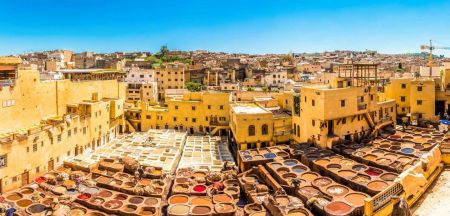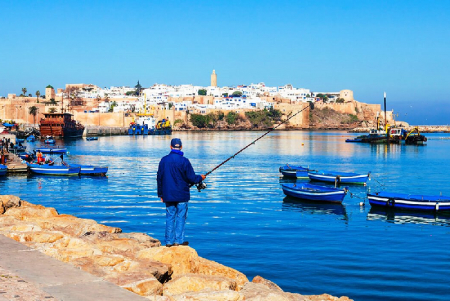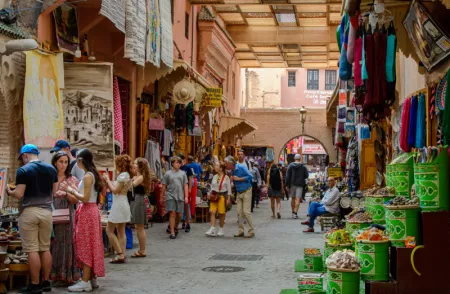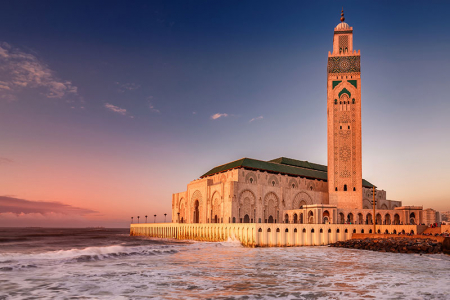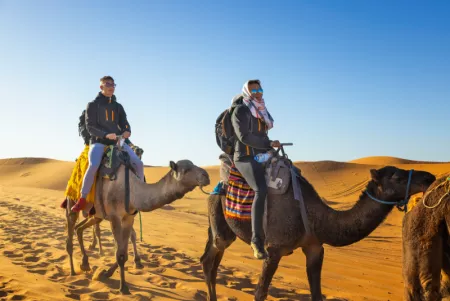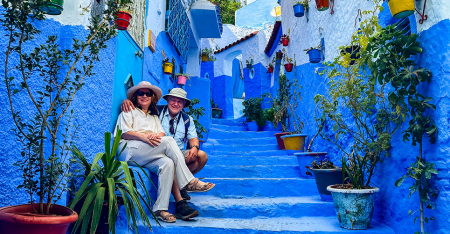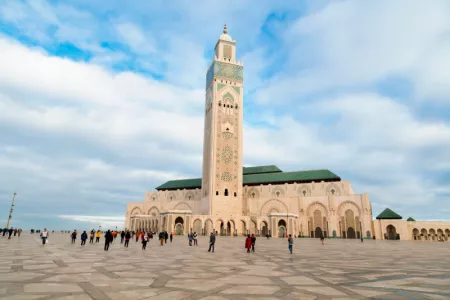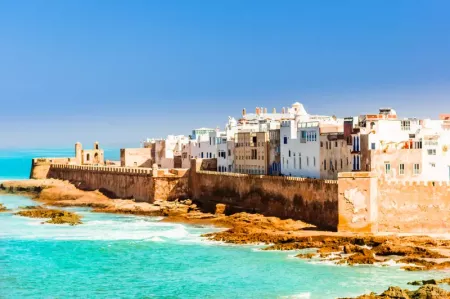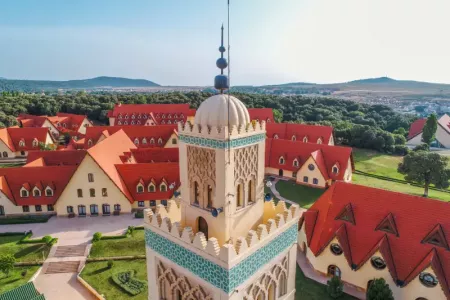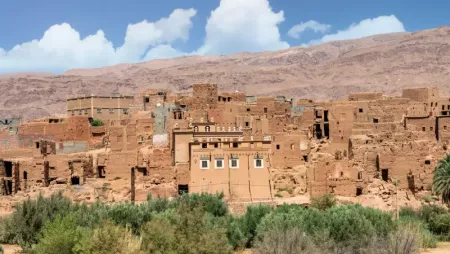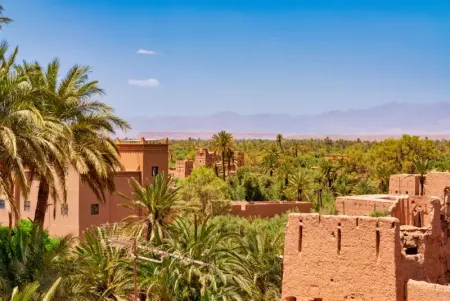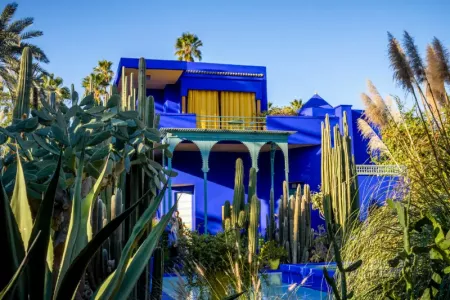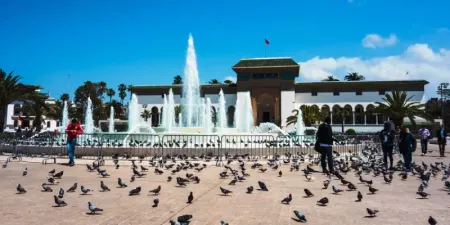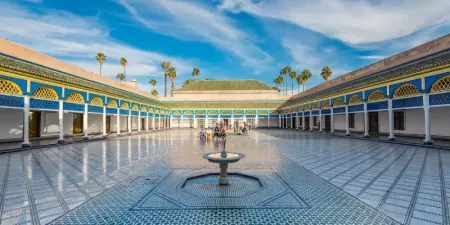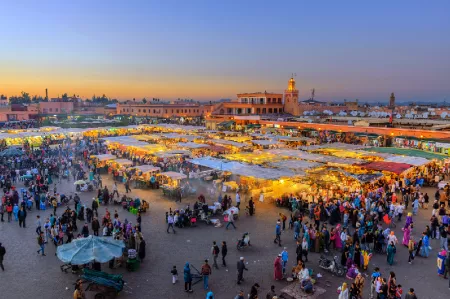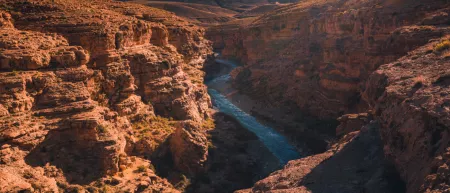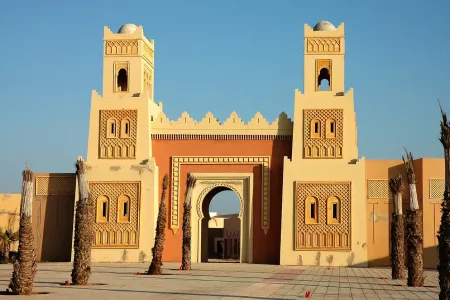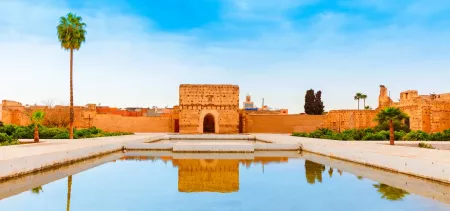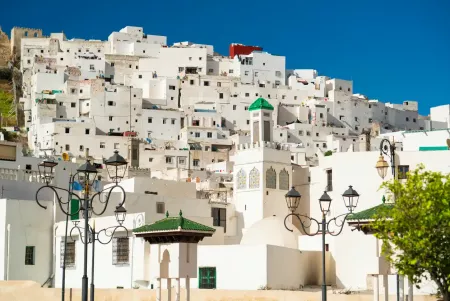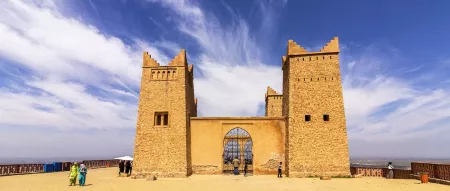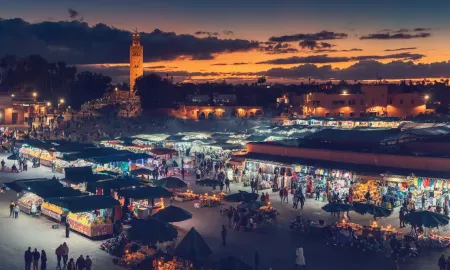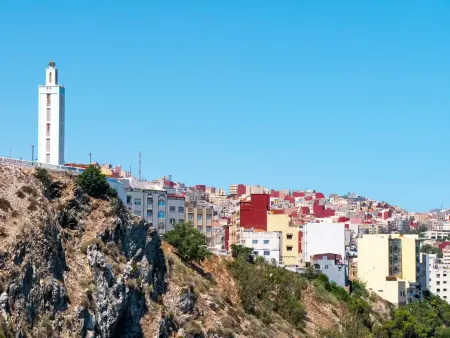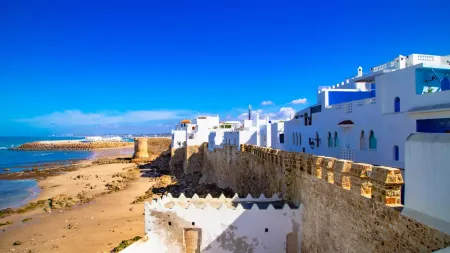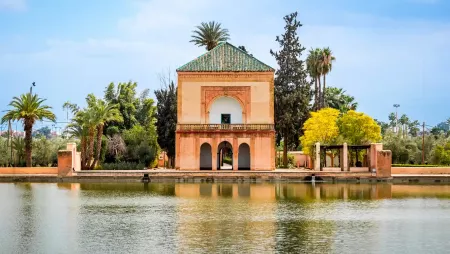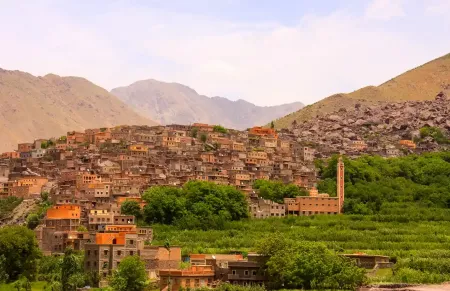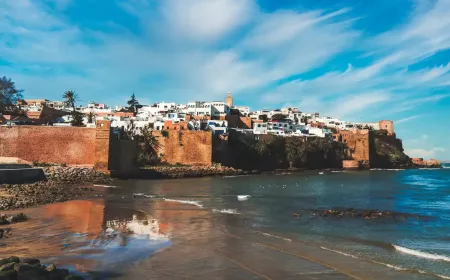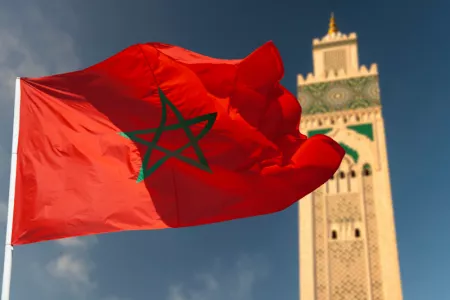Essential Facts About Morocco: Your Guide to This Magical Land
Explore essential facts about Morocco from the world’s oldest university in Fez to the Atlas Mountains, the Sahara Desert, and rich Berber-Arab traditions. Discover Morocco's interesting facts that reveal its history, culture, and surprising achievements, from film studios to Africa’s highest ski resort.
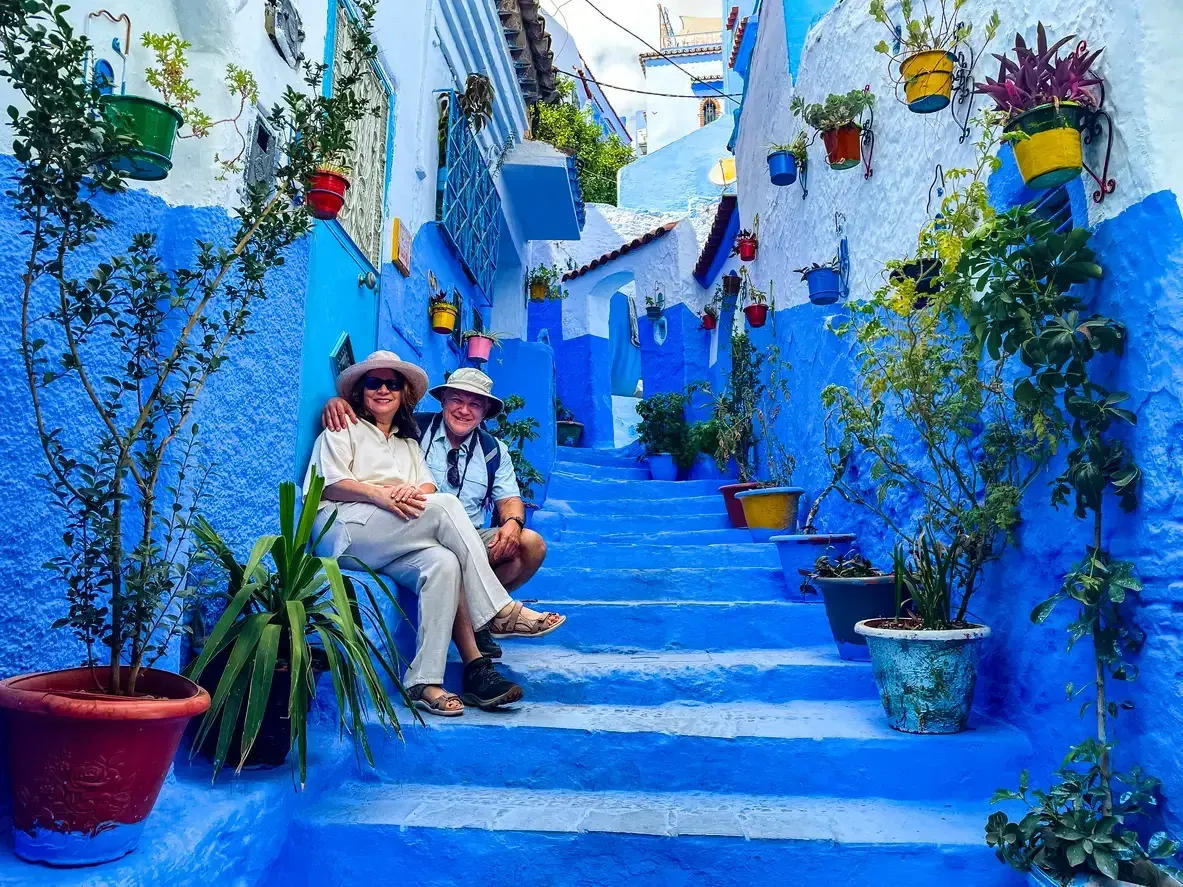
Morocco presents itself as a fascinating study of contrasts and remarkable achievements that continue to astonish visitors and scholars alike. This North African kingdom houses the University of al-Kairaouine, established in 859, which holds the distinction of being the world's oldest university. The nation's magnetic appeal extends far beyond its academic heritage. Morocco draws more visitors than any other African country, welcoming over 12 million tourists during 2018 alone.
The scope of Morocco's achievements spans unexpected territories. Picture a country roughly equivalent to California, yet containing the largest film production facilities outside Hollywood's borders[-2]. Morocco etched its name into football history as the first African nation to advance to the World Cup semi-finals. Even more surprising, the country operates Africa's highest ski resort, where slopes ascend to remarkable heights of 10,500 feet. Along its borders, Morocco unfolds a magnificent 1,930-kilometer coastline embracing both Atlantic and Mediterranean waters, adorned with beaches that rank among the world's most spectacular.
This exploration will guide you through Morocco's essential characteristics—its varied geography, enduring traditions, pivotal historical moments, and contemporary attractions that continue drawing curious minds from every corner of our planet.
The Land and Its People
Geographic overview: mountains, deserts, and coasts
Morocco occupies a strategic position as North Africa's northwestern gateway, where the Mediterranean Sea converges with the Atlantic Ocean. The kingdom shares its borders with Spain across the north, Algeria stretching eastward, and Western Sahara extending southward.
Mountains dominate this varied terrain with a commanding presence. The Atlas range creates the country's geological spine, stretching from northeast to southwest and culminating at Mount Toubkal's towering summit of 13,665 feet (4,165 meters). Northward, the crescent-shaped Rif Mountains emerge dramatically from the landscape, their peaks soaring beyond 4,900 feet. These mountain barriers create distinct climatic regions across the kingdom.
Fertile plains and plateaus nestle between these mountain ranges, particularly along the Atlantic seaboard. Agricultural activities flourishing in these areas contribute 15% to the national economy. Venturing southeast reveals a striking transformation as the terrain gives way to the Sahara Desert, complete with its legendary red sand formations. Morocco's extensive coastline stretches over 1,800 miles (2,896 km) along both maritime boundaries, offering endless opportunities for coastal exploration and aquatic pursuits.
Berber roots and Arab influence
The Berber peoples have called Morocco home for no less than 5,000 years, establishing them as the region's original inhabitants. Their presence predates every subsequent cultural wave, marking them as the authentic natives of this territory. Contemporary Berber communities maintain their strongholds primarily within the mountainous regions, where ancient customs, languages, and traditions endure.
The 7th century brought profound transformation through Arab conquest, introducing the Islamic faith and Arabic language to the region. Although Berber tribes initially resisted these changes, Arab influence gradually permeated Moroccan society, leading many Berbers toward cultural assimilation over subsequent centuries. Recent demographic data from 2021 indicates that 68% of Moroccans identify as Arab, while 25.6% maintain their Berber identity.
What is Morocco known for globally?
Several distinctive achievements have elevated Morocco's international profile. Fez houses the world's pioneering university, al-Qarawiyyin, established in 859 by the visionary Fatima Al Fihria.
Morocco's varied topography attracts diverse traveler interests, from adventure seekers drawn to desert expeditions to gastronomic explorers discovering the nation's unique culinary fusion of Arab, Andalusi, Berber, and Mediterranean elements.
Architectural heritage reveals Morocco's layered historical narrative, displaying influences from Phoenician, Roman, Arab, and European civilizations across its urban landscapes. These structural treasures, alongside bustling marketplaces, ceremonial tea traditions, and exceptional hospitality standards, have established Morocco as an irresistible destination that continues to captivate global audiences.
From history to breathtaking landscapes, experience it all with our tailor-made Morocco tour packages. Start planning today!
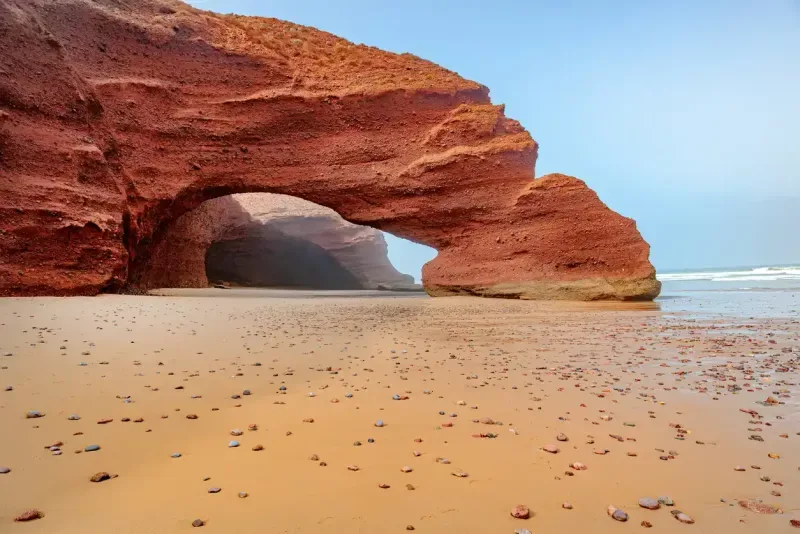
- Morocco is Africa's northwestern gateway to Europe
- You'll find three major mountain ranges: Atlas, Rif, and Anti-Atlas
- Arabic and Berber are the official languages
- The country has both Atlantic and Mediterranean coastlines
- Morocco is the world's largest phosphate exporter
- You can ski in the Atlas Mountains and surf the Atlantic coast
- Marrakech's Jemaa el-Fnaa is a UNESCO World Heritage site
- Morocco has nine UNESCO World Heritage Sites total
- The country spans the Sahara Desert, mountains, and beaches
- Moroccan mint tea is the national drink
Traditions That Define Moroccan Life
Mint tea and coffee culture
Moroccan society revolves around a beverage ritual that visitors often find enchanting: the preparation and consumption of mint tea. This sweetened elixir, affectionately nicknamed "Moroccan whiskey," flows through daily life with ceremonial significance. Families traditionally entrust tea preparation to the male head of household, though contemporary Morocco has witnessed this custom evolving across gender lines.
The artistry lies in the pouring technique. Masters of this craft lift the teapot at least twelve inches above the glass, creating a delicate foam layer called "rghowa" across the surface. This foam serves more than aesthetic purposes—it distributes flavors evenly throughout the tea. Should the foam fail to appear, tradition dictates that the entire process be begun anew.
Coffee culture operates differently within Moroccan society. Rather than serving as an energy source, coffee functions primarily as a social connector. Two distinct varieties dominate: Café Noir, resembling espresso, and Nous Nous, a blend of half coffee and half milk, historically associated with women's social gatherings.
Hospitality and social customs
Moroccan hospitality transcends social nicety; it represents a fundamental cultural obligation. Guests entering Moroccan homes immediately understand this through specific rituals: shoes removed at the threshold, warm "Marhba" greetings exchanged, followed by inevitable offerings of mint tea and food that reflect centuries of Berber, Arab, and African cultural fusion.
Gift exchange patterns reveal deeper social structures. Visitors typically present modest tokens pastries, dates, or chocolates serve as appropriate offerings. Historical customs once emphasized milk and sugar as prosperity symbols, though modern practices have adapted these traditions.
Religious and royal traditions
Islam shapes Moroccan society profoundly, with 98.5% of citizens practicing this faith. The monarchy intertwines with religious authority. Morocco's king holds the sacred title "Commander of the Believers". This religious foundation creates the framework for numerous cultural observances, particularly during Ramadan, when Muslims fast from sunrise to sunset for an entire month.
Ramadan transforms daily rhythms across Morocco. Work schedules compress to 9 am-3 pm windows, restaurants close their doors until evening, and visitors learn to respect public fasting by avoiding conspicuous eating. Evening brings communal breaking of fasts with milk, dates, and harira soup, a ritual that binds communities together. While most mosques restrict non-Muslim visitors, notable exceptions exist, including Casablanca's magnificent Hassan II Mosque.
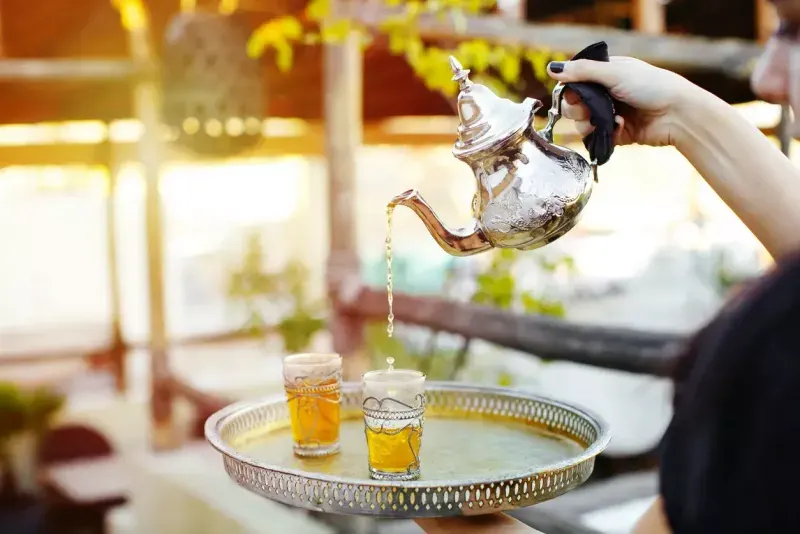
Morocco is famous for its colorful souks and medinas, Sahara Desert landscapes, mint tea culture, tagine and couscous cuisine, riads and hammams, vibrant markets, the blue city of Chefchaouen, and rich Berber and Arab heritage.
Historical and Cultural Milestones
The University of al-Qarawiyyin in Fez
Within the ancient walls of Fez lies a treasure that predates most European educational institutions, the University of al-Qarawiyyin. Founded in 857 by Fatima al-Fihri, this venerable institution holds the remarkable distinction of being the world's oldest continuously operating center of higher learning. The university's golden age arrived during the 13th and 14th centuries, when scholars gathered to study an extraordinary curriculum encompassing Quranic studies, mathematics, astronomy, and medical sciences.
The four imperial cities and their legacy
Four magnificent cities have each claimed the honor of serving as Morocco's capital throughout different dynastic periods. Fez commanded this prestigious position for an extraordinary 650 years across four distinct dynasties. Marrakech, established in 1062, assumed imperial status under successive rulers—the Almoravids, Almohads, Saadi, and Alaouite dynasties. The 17th century witnessed Meknes' rise to imperial prominence under the reign of Sultan Ismail Ibn Sharif. Finally, Rabat, though originally founded by the Almohads, claimed its current status as the official capital beginning in 1912.
Morocco's monarchy and Throne Day
Each year, Morocco observes "Throne Day" as a celebration marking the reigning monarch's accession to power. This tradition originated in 1933 to honor Sultan Mohammed V, though the specific date varies with each successive ruler. Today's celebrations occur on July 30th, featuring the ceremonial bay'ah, a formal pledge of allegiance from officials to their sovereign.
Fez: one of the oldest medieval cities
The medina of Fez stands as a testament to medieval urban planning, earning recognition as a UNESCO World Heritage Site while maintaining its status as one of the globe's most extensive car-free urban areas. Established during the 9th century, Fez reached its architectural pinnacle under Marinid rule from 1250 to 1465, during which many of the city's most stunning monuments took shape.
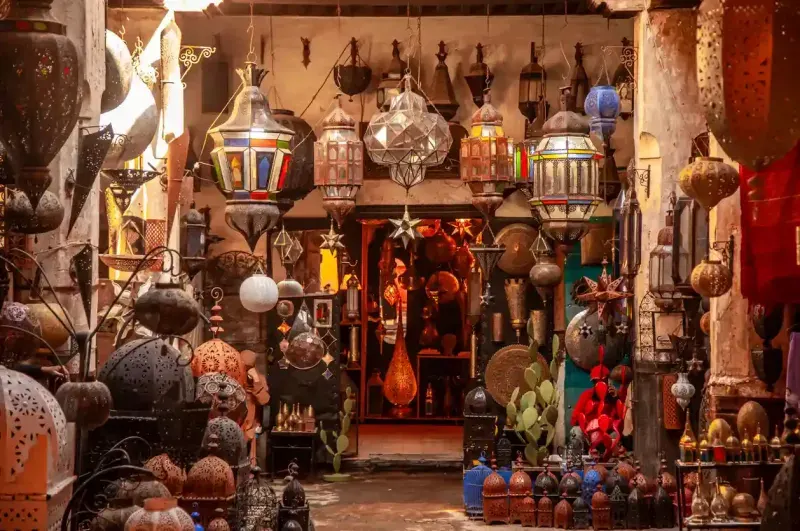
The Barbary lion is Morocco's national animal, though it's extinct in the wild. You'll also see the Barbary macaque (the only wild monkey in Africa north of the Sahara) as a cultural symbol.
Customize Your Dream Vacation!
Get in touch with our local experts for an unforgettable journey.
Plan Your Trip
Modern Morocco: Art, Film, and Global Appeal
Morocco's role in global cinema
Morocco's cinematic prominence extends well beyond its ancient medinas and historical monuments. The country has earned recognition as "Hollywood of Africa," with Ouarzazate serving as the backdrop for epic productions including Gladiator and Kingdom of Heaven. Essaouira's coastal charm transformed into Astapor for the acclaimed series Game of Thrones. King Mohammed VI established the Marrakech International Film Festival in 2001, strategically positioning Morocco within the global film industry. The year 2023 witnessed unprecedented growth, with Moroccan cinema achieving record production levels alongside foreign investments totaling 1.14 billion dirhams.
The artistic legacy of Tangier and Essaouira
Essaouira emerges as a remarkable artistic destination, drawing creative minds from across continents who find inspiration in its distinctive light and vibrant colors. Two artistic movements define the city's cultural landscape: Naïve Style, characterized by bold brush strokes incorporating Gnaoua Sufi imagery, and Calligraphy, which weaves Arabic and Berber scripts into canvas compositions. Galleries such as Espace Othello and Frédéric Damgaard provide platforms for showcasing exceptional local talent.
Casablanca's Jewish museum and cultural fusion
The Museum of Moroccan Judaism in Casablanca holds a unique distinction as the sole Jewish museum operating within the Arab world. This cultural institution, originally constructed as a Jewish orphanage in 1948, spans 700 square meters dedicated to preserving Moroccan-Jewish heritage. Visitors encounter an extensive collection featuring ritual objects, historical documents, traditional costumes, intricate jewelry, and meticulously reconstructed synagogues.
Remarkable contrasts: ski slopes and coastal beauty
Morocco continues to surprise with its geographical contradictions. Oukaïmeden ski resort operates as Africa's highest winter sports destination, featuring 10 kilometers of slopes ascending to 3,262 meters in altitude. This extraordinary nation effortlessly combines desert expeditions with alpine adventures, creating possibilities that few countries can match.
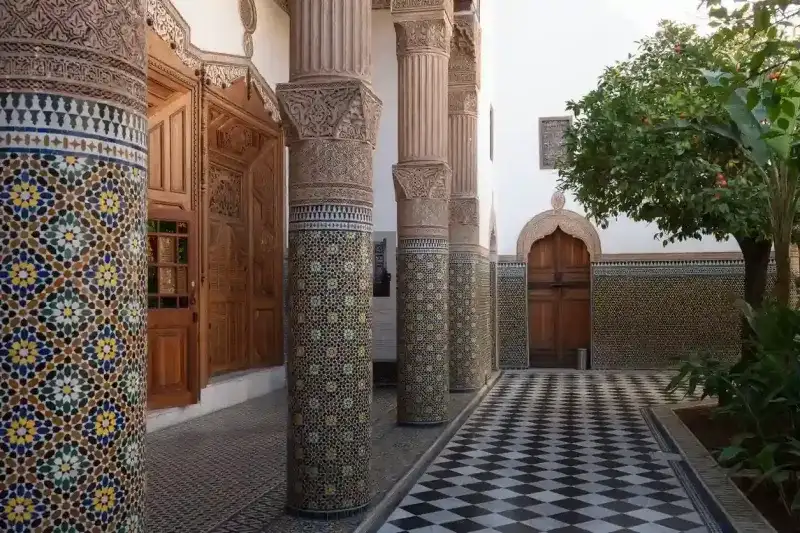
Morocco has no camels native to the country; all the camels you'll see were brought from other places! Also, Moroccan kids often play soccer in the streets, and school is taught in Arabic and French.
Conclusion
Morocco emerges from this exploration as a remarkable convergence of ancient wisdom and contemporary dynamism. Our educational journey reveals a nation that consistently challenges expectations, where millennia-old institutions coexist with cutting-edge industries across landscapes that shift dramatically within mere kilometers.
The cultural synthesis achieved here tells a profound story. Berber heritage interweaves with Arab traditions, creating customs that have evolved yet retained their essential character. Each imperial city contributed distinct chapters to Morocco's narrative, while religious and royal traditions continue shaping daily rhythms across the kingdom.
Contemporary Morocco demonstrates equal mastery of global engagement. Film productions utilize these varied terrains, artistic communities thrive in coastal havens, and cultural preservation efforts maintain the delicate balance between honoring heritage and embracing progress. The nation's commitment to inclusivity manifests through institutions that celebrate diverse historical contributions.
Perhaps most remarkable remains Morocco's capacity to surprise. Desert adventures neighbor Alpine experiences, medieval architecture stands alongside modern developments, and time-honored hospitality traditions welcome visitors into a world where discovery awaits around every corner. This kingdom rewards those who approach with curiosity, offering layers of understanding that deepen with each encounter.
Morocco's appeal transcends typical tourist destinations; it functions as a living classroom where geography, history, culture, and human achievement intersect in extraordinary ways. The kingdom continues earning its reputation as one of our planet's most intellectually stimulating and emotionally captivating destinations.
FAQs
Q1. What are some unique aspects of Moroccan culture?
Morocco is known for its mint tea tradition, warm hospitality, and blend of Berber and Arab influences. The country also has a rich history, including housing the world's oldest university, and a diverse landscape featuring mountains, deserts, and beautiful coastlines.
Q2. How should visitors respect local customs in Morocco?
Visitors should dress modestly, avoid public displays of affection, and use their right hand for eating and gestures. It's also polite to remove shoes when entering homes and to accept offers of mint tea as a sign of hospitality.
Q3. What are some must-visit places in Morocco?
Morocco offers diverse attractions, including the ancient medina of Fez, the vibrant markets of Marrakech, the coastal charm of Essaouira, and the modern capital Rabat. For nature lovers, the Atlas Mountains and the Sahara Desert provide unique experiences.
Q4. Is Morocco suitable for winter sports?
Surprisingly, yes! Morocco is home to Africa's highest ski resort, Oukaïmeden, which offers 10 kilometers of slopes reaching up to 3,262 meters in altitude. This allows visitors to experience both desert adventures and winter sports in the same country.
Q5. How has Morocco contributed to global cinema?
Morocco has become known as the "Hollywood of Africa" due to its diverse landscapes used in many international film productions. Cities like Ouarzazate have hosted blockbuster movies, and the country has its own thriving film industry, supported by events like the Marrakech International Film Festival.
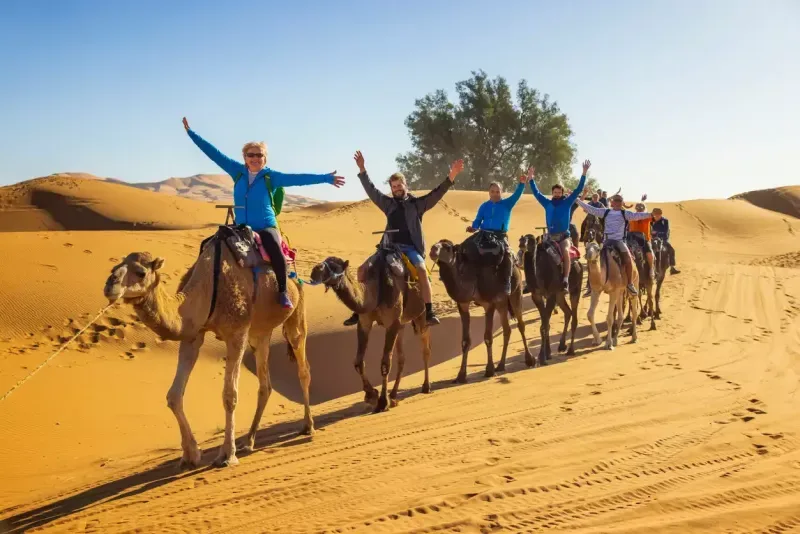
Morocco's official name is the Kingdom of Morocco (Al-Mamlakah al-Maghribiyah in Arabic), meaning "Kingdom of the West."

